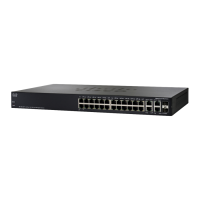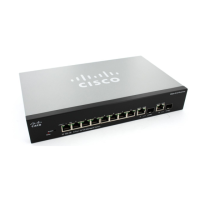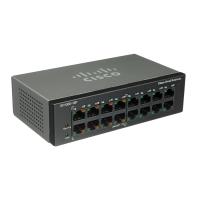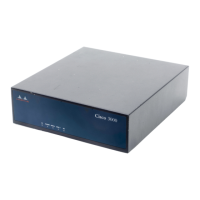Network Management Protocol (SNMP) Commands
871 OL-32830-01 Command Line Interface Reference Guide
45
Command Mode
Global Configuration mode
User Guidelines
For SNMP v1 and v2, this command performs the same actions as snmp-server
community-group, except that snmp-server community-group configures both v1 and v2 at the
same time. With this command, you must perform it once for v1 and once for v2.
When you enter the show running-config command, you do not see a line for the
SNMP user defined by this command. To see if this user has been added to the
configuration, type the show snmp user command.
A local SNMP EngineID must be defined in order to add SNMPv3 users to the
device (use the snmp-server engineID remote command). For remote hosts users
a remote SNMP EngineID is also required (use the snmp-server engineID remote
command).
Changing or removing the value of snmpEngineID deletes the SNMPv3 users’
database.
The logical key of the command is username.
Configuring a remote host is required in order to send informs to that host,
because an inform is a trap that requires acknowledgement. A configured remote
host is also able to manage the device (besides getting the informs)
To configure a remote user, specify the IP address for the remote SNMP agent of
the device where the user resides. Also, before you configure remote users for a
particular agent, configure the SNMP engine ID, using the snmp-server engineID
remote command. The remote agent's SNMP engine ID is needed when
computing the authentication and privacy digests from the password. If the
remote engine ID is not configured first, the configuration command fails.
Since the same group may be defined several times, each time with different version or
different access level (noauth, auth or auth & priv), when defining a user it is not sufficient to
specify the group name, rather you must specify group name, version and access level for
complete determination of how to handle packets from this user.
Example
This example assigns user
tom
to group
abcd
using SNMP v1 and v2c. The default
is assigned as the engineID. User
tom
is assigned to group
abcd
using SNMP v1
and v2c
switchxxxxxx(config)#
snmp-server user tom acbd v1
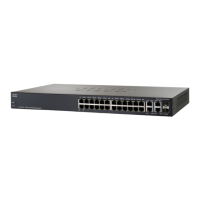
